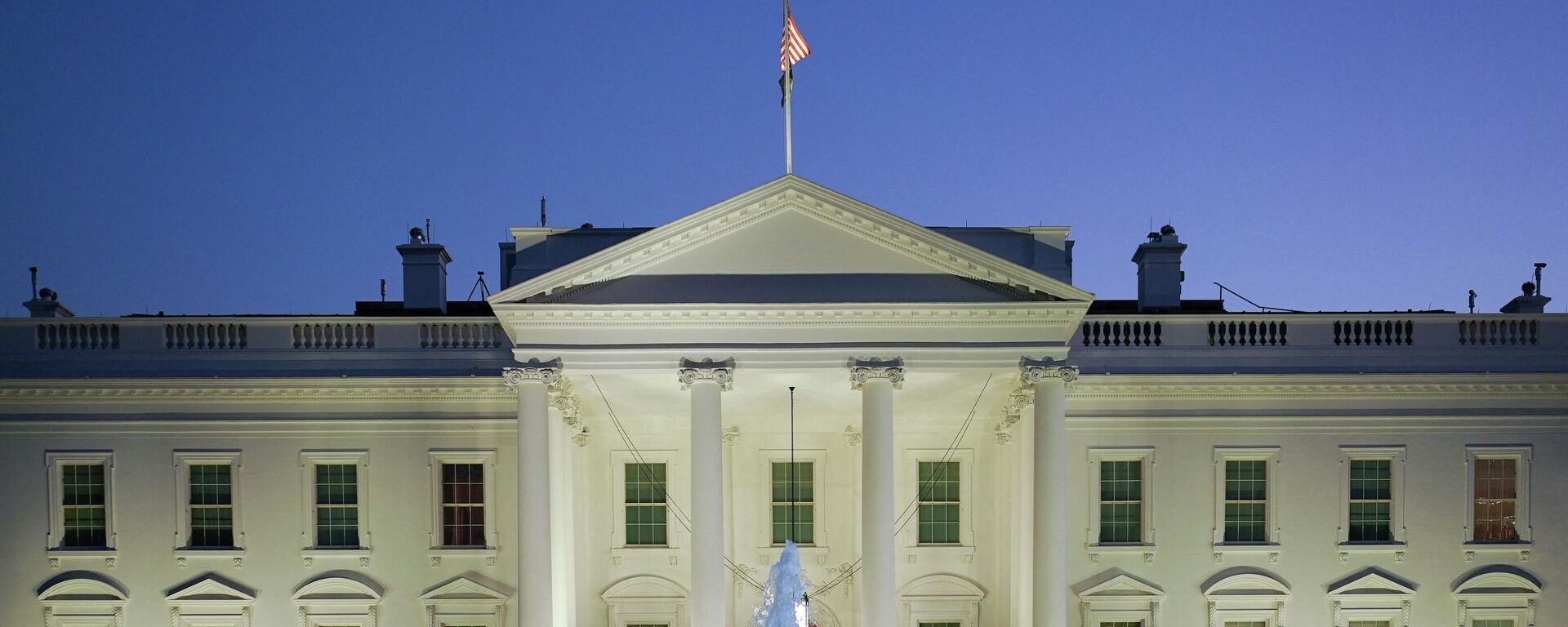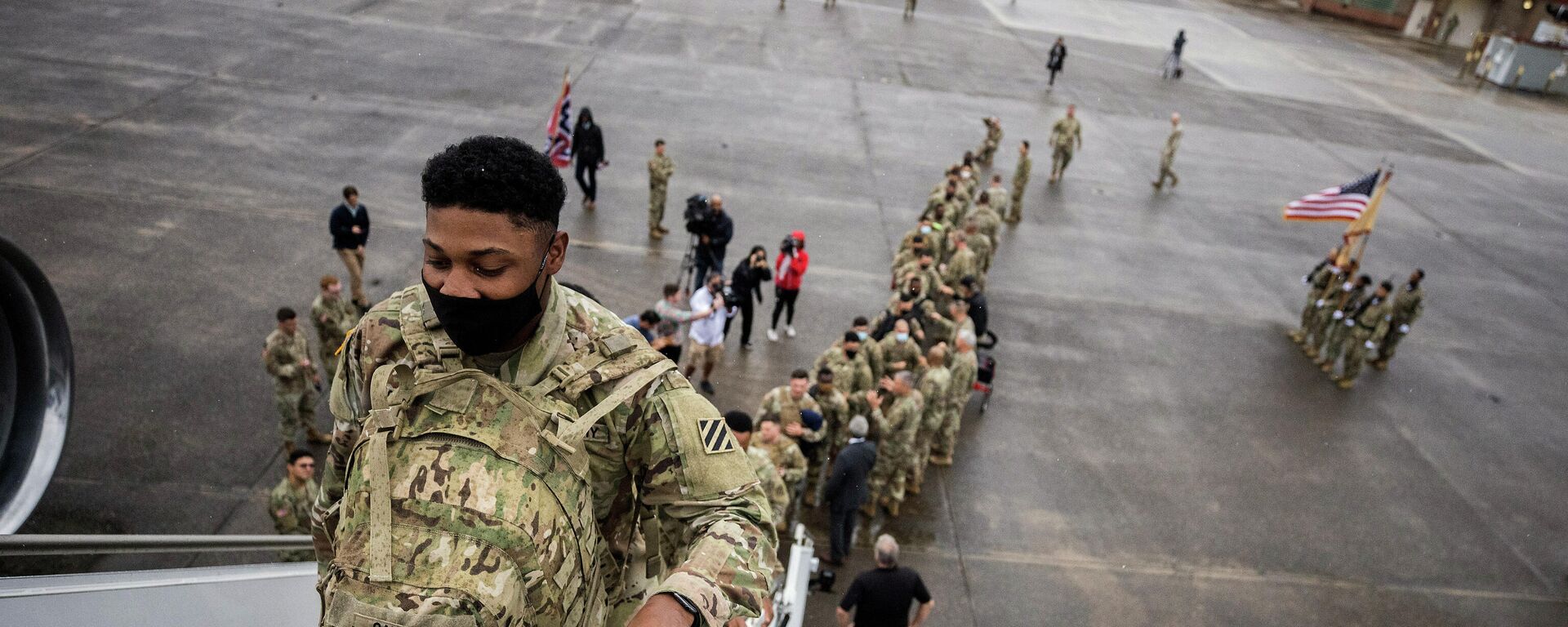5 Warning Signs You May Be a Party to the Ukrainian Conflict
13:15 GMT 09.11.2022 (Updated: 13:45 GMT 09.11.2022)

© AP Photo / Peter Dejong
Subscribe
NATO Secretary General Jens Stoltenberg reiterated last month that the alliance “is not [a] party to the conflict” in Ukraine, echoing similar claims made by US and European leaders in recent months. But can one ever be sure about their involvement in a security crisis threatening to escalate into a global inferno? Here are a few warning signs.
The “NATO is not a party” in Ukraine talking point has been repeated ad nauseam over the past eight months, with Moscow catching the military bloc tripping up in its own lies last month after Mr. Stoltenberg warned that a Russian victory in Ukraine would constitute a “defeat” for NATO that would “make the world more dangerous.” Kremlin spokesman Dmitry Peskov said the NATO chief’s comments were direct confirmation of the Western military bloc’s involvement in the crisis.
$100 Billion Worth of ‘Non-Involvement’
According to this handy Ukraine aid funding tracker, Washington and its allies have already poured more than $100 billion worth of military and economic support to Kiev since February, with the Kiel Institute of World Economy’s "Ukraine Support Tracker" estimating that some $27.5 billion of that constitutes US military aid alone. The UK, Poland, Germany, Canada, and other NATO allies have contributed more than $9 billion in additional weapons assistance.
What’s Ukraine getting for this? The list is quite comprehensive, and includes stuff you’d expect in a Cold War-style proxy conflict, from Stinger and Javelin missiles and precision rocket artillery to troop transporters, drones, radars, night vision, helmets, and body armor. There’s also some unusual "assistance," like a CIA slush fund (size unknown), $900 million for non-profits, and even $54 million in COVID aid (after all, gotta keep troops safe from the virus as bombs and bullets literally rain down all around them).
✈️🇵🇱🇺🇸🇪🇺🇬🇧🇷🇺🇺🇦Map of NATO flights to Rzeszow (Poland) where weapon are unloading from October 1 to November 1, 2022,the city i entry points for weapons for Ukraine
— AZ 🛰🌏🌍🌎 (@AZgeopolitics) November 4, 2022
P.S. "NATO is not party to the conflict. But we will continue to support Ukraine" pic.twitter.com/uDDm7WigZe
Intelligence, Fire Support, and Planning Assistance
NATO’s "non-involvement" isn’t limited to weapons and cash. According to the US Congressional Research Service, Washington has gifted Kiev a broad range of “security assistance” going back to the 2014 Euromaidan coup, including intelligence support, “electronic warfare detection and secure communications,” and “satellite imagery and analysis capability.” This includes a continuous stream of access to images obtained by commercial satellites for use by Ukrainian military planners.
What does the latter mean in practice? Put simply, it gives the Ukrainian Armed Forces access to the Western bloc’s spy satellites – which are the most advanced in the world thanks to bottomless funding and three decades of US and NATO wars of aggression across the Middle East, Yugoslavia, Asia, and North Africa.
In September, French media reported that the Pentagon has even been directly involved in planning Ukrainian military operations, complementing Sputnik’s reporting from the summer revealing that Ukraine’s HIMARS were being manned by outstaffed NATO military personnel. How’s that for “non-involvement"?
Iran supplies weapons to Russia – Iran is a combatant. NATO supplies weapons to Ukraine – NATO is not a party to the conflict 🤦🏻♂️ The logic of the Pentagon admires pic.twitter.com/wFJsPuIzat
— Simonov K.V. 🇷🇺🇺🇸🇷🇸🇸🇾🇦🇺🇨🇦🇬🇧🇧🇬🇫🇷 (@simonovkvramble) October 22, 2022
Boots on the Ground, Boots in the Ground?
Late last month, the Pentagon confirmed that “small teams” of US military personnel have been dispatched to Ukraine, ostensibly to inspect weapons deliveries to ensure that Western military aid is going where it needs to after a series of reports that much of the military aid was being smuggled out of the warzone by arms dealers.
The story has gone heavily underreported, drowned out by the US midterms and celebrity gossip. However, a few outlets have sounded the alarm about this development, pointing out that the repercussions of US troops potentially getting injured or killed in a Russian military strike on a Ukrainian arms cache have not been sufficiently mapped out.
Diplomatic Doldrums
NATO’s fingerprints are all over Ukraine even on the diplomatic front. This week, Volodymyr Zelensky expressed openness to “genuine peace talks” with Russia, walking back a decree signed just last month ruling out any negotiations with President Vladimir Putin altogether.
US security officials were quick to take credit for the Ukrainian president’s apparent change of heart, telling media that it was made possible “due to soft nudging by the Biden administration.” One security official explained that Zelensky’s new stance came following a visit to Kiev by Biden National Security Advisor Jake Sullivan, who reportedly “relayed” to Kiev that Washington considers it essential for Ukraine to show willingness to put an end to the crisis in a “reasonable” and “peaceful” manner.

9 November 2022, 11:54 GMT
Washington’s direct influence on Kiev has not escaped the eyes of Russian officials, who have spent the past eight-and-a-half years blasting the US, the EU, and NATO for starting the Ukrainian crisis in the first place. On Wednesday, Russian Ambassador to the US Anatoly Antonov reiterated in an interview with Sputnik that “the decision-making center” determining Ukraine’s fate is not even located in Kiev.
“Everyone could see this in March, when one cry from Washington was enough for the Zelensky regime to nullify the agreements reached during intensive contacts” between Kiev and Moscow, Antonov said, recalling the reports that now-former British Prime Minister Boris Johnson was speedily dispatched to Kiev at Washington's behest to sabotage Russian-Ukrainian peace talks.
‘iStand With Ukraine’
All this costly and exhausting non-involvement by NATO in the Ukraine crisis has been accompanied by wartime footing against Russia not just by Western governments and militaries, but by corporations as well. Since February, over 1,000 companies have cut, partially curtailed, or dramatically downsized operations in Russia in a bid to "punish" Moscow and demonstrate that they “Stand With Ukraine.” The campaign has been accompanied by a massive ad campaign targeting Russian IPs informing the hip urban youth and yuppie masses that Putin had robbed them of their beloved symbols of Western consumerism, from Coca-Cola and McDonald’s to iPhones and Mercedes. So far, though, the Russian people seem to have been able to cope with these terrible losses somehow, replacing Coke with Chernogolovka and CoolCola, swapping Mickey D’s for Vkusno I tochka, and ramping up the production of domestic brand vehicles while negotiating the import of more cars from countries like Iran, China, and Turkey.
Exercise in Political Sophistry
NATO’s “non-involvement” rhetoric is little more than an act of political “sophistry,” according to Global Policy Institute senior research fellow George Szamuely.
“According to Stoltenberg, unless you have troops of your own on the ground you are not a combatant. This is the very acme of sophistry. There is nothing in international law to support his contention,” Szamuely said in a recent op-ed.
The observer pointed out that under the Hague Convention Respecting the Rights and Duties of Neutral Powers in Cases of War on Land, “a neutral power is not permitted to use its territory for purposes of moving troops or munitions to a combatant.” The analogous convention concerning naval warfare is even more explicit, stating that “the supply in any manner, directly or indirectly, by a neutral power to a belligerent power of ammunition or war material of any kind is forbidden.”
“There’s nothing here to suggest that it’s okay to do so as long as you don’t have forces of your own taking part in armed combat. The NATO powers in fact are doing much more than providing Ukraine with weaponry. They are also providing training on their own and on Ukrainian territory. NATO powers are also involved in targeting decisions," Szamuely said. "Multiple sources have revealed that the US is directly involved in Ukrainian tactical and operational decisions…NATO’s assertion that it’s not a combatant is as plausible as its claim that it’s a defensive alliance,” the observer emphasized.


